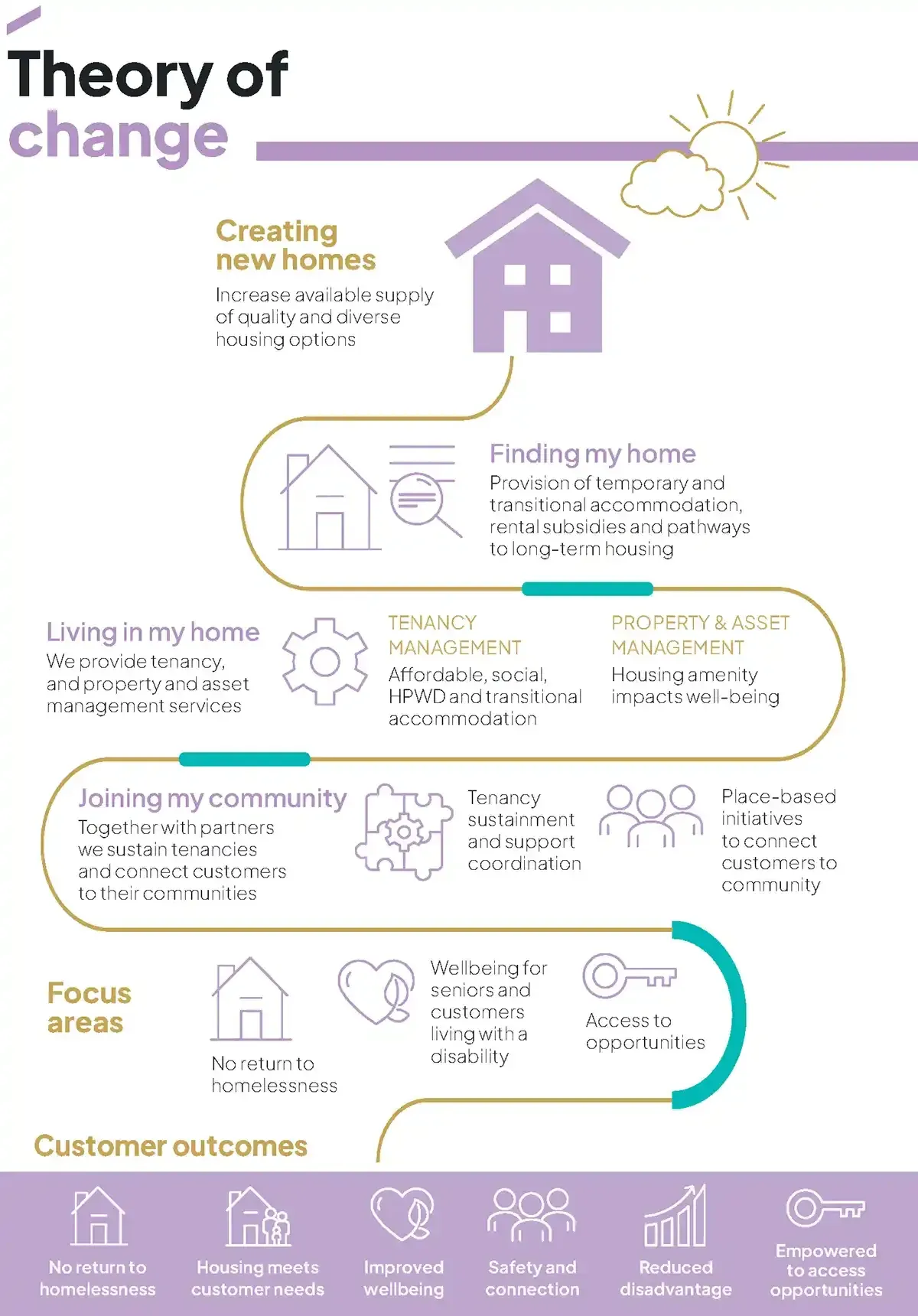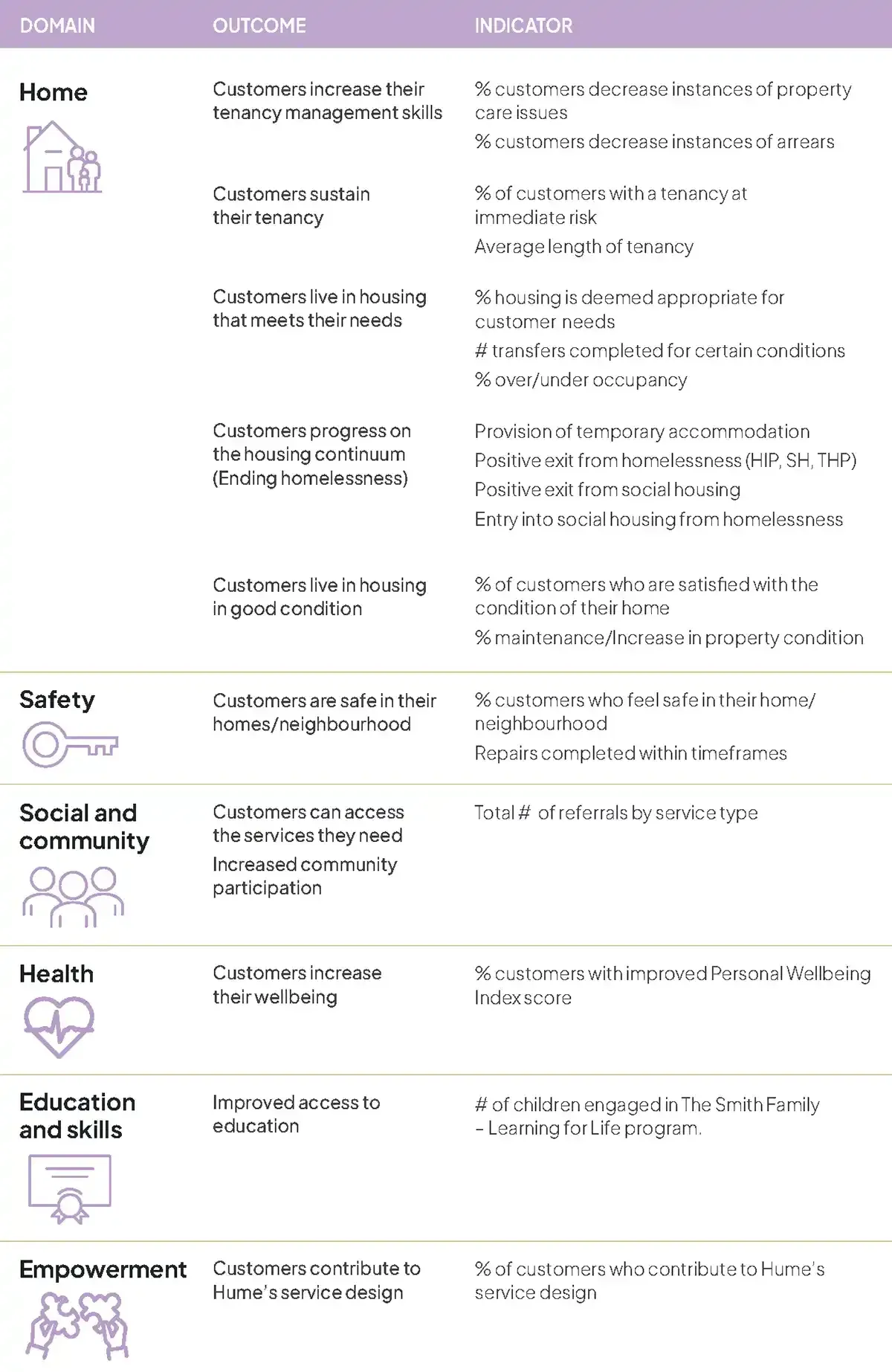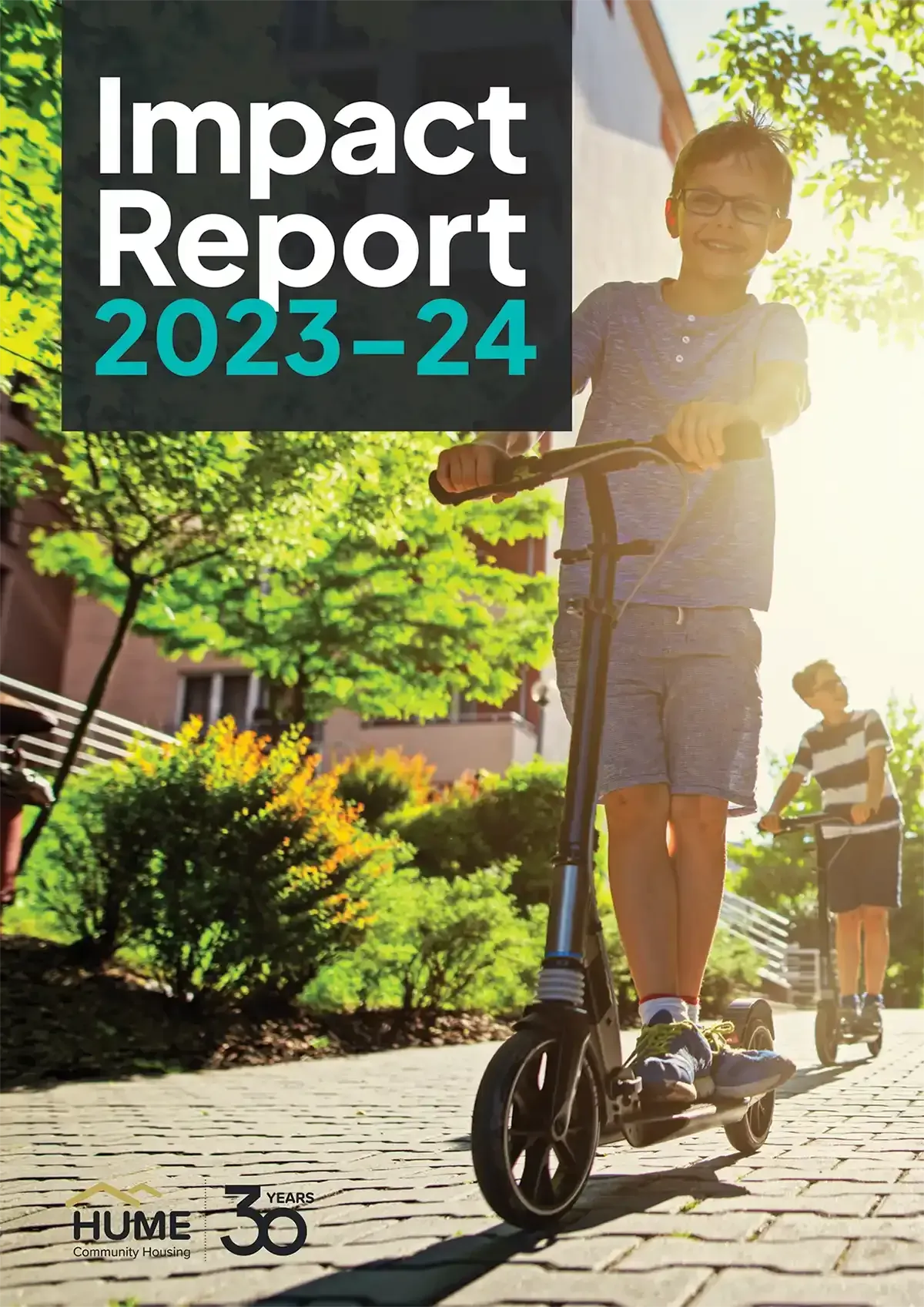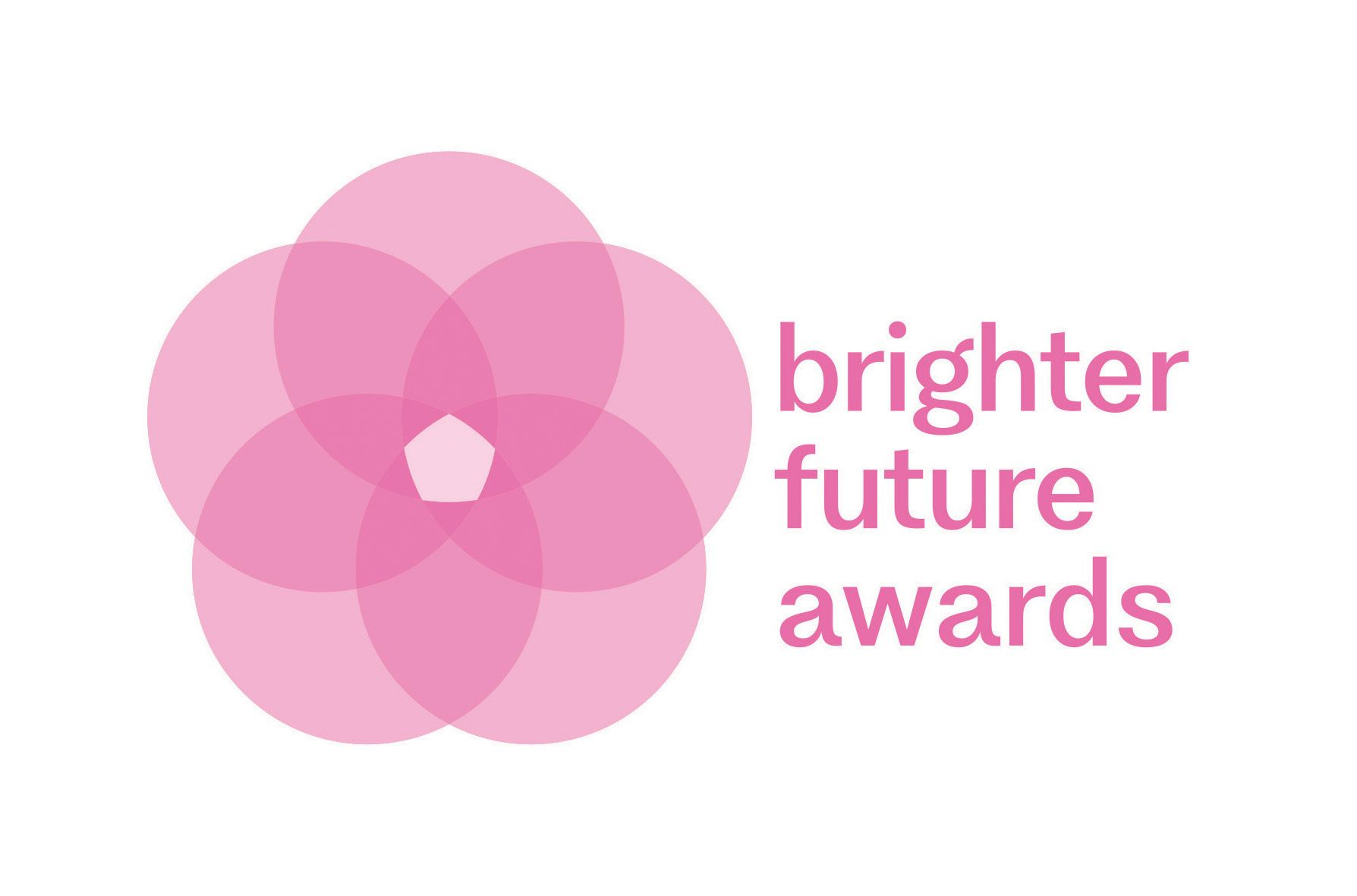You can learn more about Hume’s Outcomes Framework and their social impact strategy in Hume’s 2024 Impact Report.
Determining social impact demands formalised processes of discovery and reporting. Sally Regan, General Manager, Specialist Housing and Impact from Hume Housing provides a detailed explanation of how Hume has gone beyond the anecdotal to accurately quantify the social impact of their programs on tenants.
It is increasingly important for community housing providers to not only deliver social impact for customers and communities, but to also demonstrate to government and stakeholders the return on investment we achieve. Hume has developed a Social Impact Strategy that describes changes we make in our customers’ lives, along with identifying areas we seek to improve. Now operational, the strategy is transforming Hume’s service delivery.
Hume has delivered positive social impact for over 30 years, but it was not until we developed a bespoke framework and corresponding data analytics tools that we could begin to quantify our impact and better assess how we’re delivering on our purpose of ‘Creating opportunities for people to prosper’.
Hume’s Outcomes Framework (also known as HOF) captures the changes that occur over time for individuals, groups, families or communities due to the services and programs Hume offer.
In 2019, we first began the multi-year process of measuring and quantifying our impact through the development of an Outcomes Framework. The HOF project took a backseat when Hume successfully secured the largest social housing management transfer in Australian history. This transfer saw our portfolio double in size from 2,200 homes to close to 5,000 homes and over 9,000 customers.
Once business had stabilised from this momentous growth phase and we had emerged from COVID restrictions, the project team was in a better position to fully commit to the complex challenge of designing the framework.
We’re particularly proud that we utilised and built upon in-house expertise using a small project team dedicated to the project. To begin, we undertook a foundational review of social impact measurement research and literature to ensure both preparedness and best-practice process informed our approach. The literature described a well-developed methodology to mobilise, map, measure and manage, including:
1. Engaging teams to link activity to outcomes through program logics;
2. Process and data-source mapping; and
3. Identification of indicators, available metrics and building reports.
The project team then took deep-dives into each business unit to fully understand their programs and service delivery, as well as their expectations in relation to intended impacts to customers’ lives.
This phase involved a deep and thorough analysis of Hume’s activities and outcomes already achieved. Importantly, these were aligned with the NSW Government Human Services Outcomes Framework domains. Furthermore, it ensured our process was externally validated by a third party (For Purpose Evaluations) who also provided feedback and signposts for future enhancements to our framework.
Once program activity was mapped and outcomes described, we synthesised the information into a whole-of-organisational map of our outcomes. Multiple outcomes were found to overlap, such as meeting housing needs and sustaining tenancies. While initially this appeared to simplify the Outcomes Framework into the most important measures, it remained a significant body of work as every measure is complex in its own way.
We then built on our Customer Experience Strategy and were able to design Hume’s organisational Theory of Change into a high-level view reflecting our organisational purpose of providing people with opportunities to prosper.

The next stage was building our in-house capability to undertake measurement, recognising that our in-house data management capability, for both operational as well as outcomes measurement, needed to be significantly enhanced.
To meet this challenge, Hume invested in recruiting data management experts who were instrumental in moving the HOF forward. While bringing much-needed capability, the data team exposed the complexity involved in capturing the right data in the right way and developed a series of customisable reports using digital dashboards. This included building a data warehouse so disparate data sources could be better managed, followed by the replacement of our older data analytics software with state-of-the-art Power BI.
The success of the framework hinged on solid collaboration between the project and data teams. Together, we identified indicators for each outcome from existing data and where new data sources were needed. Where historical data exists, we can have a retrospective view for some measures, otherwise with new data sources it would be 12 to 24 months before we could measure meaningful change. However, the focus was ensuring baseline data. Our analytics capacity now includes comparisons of geographical areas and housing types and programs. In future iterations, we aim to increase in sophistication by analysing results for different customer cohorts.
Several new processes were designed to capture data directly from customers e.g. asking customers how safe they feel in their home and neighbourhood. Needless to say, we made many pragmatic decisions along the way based on the reasonableness of adding new processes to our busy frontline employee’s time. We sought to keep new and additional procedures to a minimum and use existing data as much as possible.
Data issues identified were either:
- Systems-related – the systems could not capture the data reliably or at all;
- Procedure-related – there was no consistent process for data capture;
- Integrity-related – we needed to be sure the data was reliable;
As is to be expected in any human service organisation, teams were juggling multiple competing priorities. We found some teams/programs were ready to design and implement a new procedure while others were unable to so, and scheduling was adjusted accordingly. Designated subject matter experts carefully worked around operational demands.
After three years of research, implementation and building inhouse capability, Hume’s Outcomes Framework is fully operational and features multiple Power BI dashboards, able to record and compare at least two years of data showing improved outcomes or where services could be strengthened to provide greater impact.

This is a huge first step and, while we’re still in our infancy of measuring our impact, we acknowledge this is a long-term proposition that will incrementally improve year on year. Today, we can identify where data analytics can be further improved, and we have a series of measures still in the pipeline yet to be implemented.
Hume’s Outcomes Framework ensures a best-practice and evidence-based approach to our service provision and drives data-driven decision-making. Over time, not only are we adding to our growing body of evidence but also ensuring a new level of clarity is established for our teams, customers, partners and stakeholders.
As part of this body of work, the project team managed delivery of Hume’s first Impact Report, which provides an overview of our social impact, alongside out broader environmental and governance commitments.
Hume’s Impact Report identifies our three priority focus areas, which we identified with the help of collaborative conversations with employees and customers. These are:
- No reoccurring homelessness – when a customer comes to us from homelessness the cycle of homelessness stops with us. They never return to homelessness;
- Improved wellbeing for seniors and people with a disability;
- Improved access to opportunities – specifically driven by a new partnership with The Smith Family providing educational support opportunities to families.
Measuring social impact and refining the processes for quantification are not set-and-forget exercises. We’ll be continually revisiting our impact study from different angles and using different tools along with advancements in technology. The only constant we hope to see is how positive social impact from Hume’s programs continues to rise, as do the numbers of people and families maintaining secure tenure and leaving homelessness behind.
Share This Article
Other articles you may like









